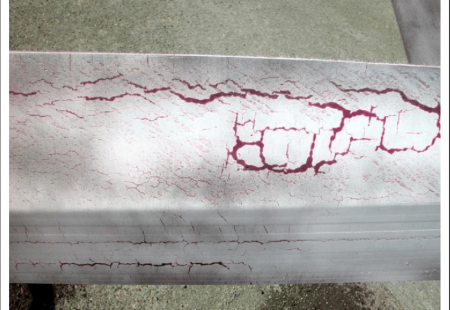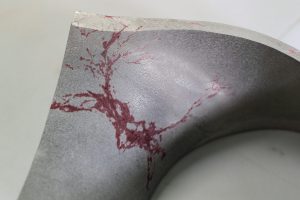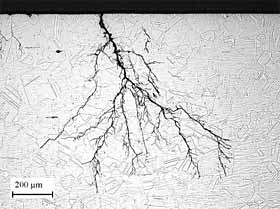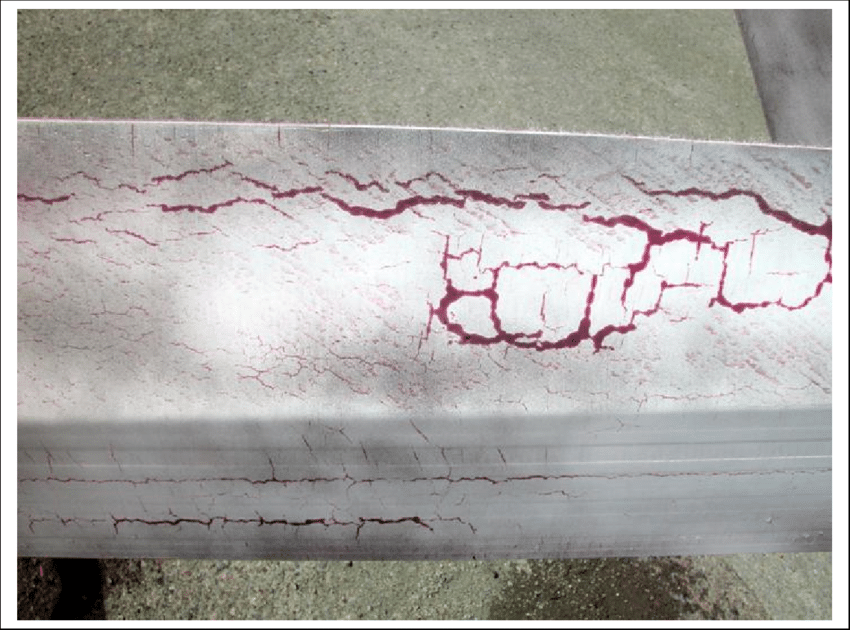- Home
- About
- Training Courses
- ASME Courses
- API Courses
- API 510 Pressure Vessel
- API 570 Process Pipework
- API 653 Aboveground Storage Tank
- API 936 Refractory Personnel
- API 580 RBI Online
- API 580 RBI Classroom *New*
- API 571 Corrosion & Materials Online
- API 571 Corrosion & Materials Classroom *New*
- API 577 Welding Inspection & Metallurgy Online
- API 510 CPD Training
- API 570 CPD Training
- API 1169 Pipeline Construction
- API SIFE Source Inspector Fixed Equipment
- API SIRE Source Inspector Rotating Equipment
- E-Learning
- Technical Courses
- API CPD Recertification
- Training Courses
- Technical Hub
- Virtual Training
- FAQs
- Contact
- Online Training Portal
- Shop

- In: Training | On: Feb 12, 2023
Chloride Stress Corrosion Cracking
Chloride Stress Corrosion Cracking (SCC) is a type of corrosion that can occur in metal alloys, especially in those that are used in corrosive environments. It occurs when metal components are exposed to both tensile stress and chlorides, forming cracks in the material. The damage caused by Chloride SCC can be severe and can result in material failure, leading to significant safety and economic consequences.

Chlorides are widely present in many industrial and natural environments, such as seawater, de-icing salts, and some soil types. When metal alloys are exposed to these environments, they can become vulnerable to Chloride SCC. This type of corrosion is particularly common in materials like stainless steel, nickel alloys, and aluminium alloys.
One of the key features of Chloride SCC is that it can occur even in the absence of external corrosion. This means that even though the surface of the metal may appear to be in good condition, internal cracks can form, making the material weaker and more susceptible to failure.
The mechanism of Chloride SCC is complex and not fully understood. However, it is believed to involve the interaction of chlorides with the metal at the grain boundaries, leading to the formation of stress corrosion cracks. As the cracks grow, they can weaken the material, reducing its strength and leading to material failure.
Chloride SCC can have a significant safety and economic consequences, especially in critical applications like pipelines, pressure vessels, and offshore platforms. In these cases, material failure can lead to leaks, spills, and other hazards that can result in significant environmental damage and financial losses. A 2015 HSE safety alert can be read here.
To prevent Chloride SCC, it is important to choose the right materials and properly design and maintain the components used in corrosive environments. This can include using materials with improved resistance to Chloride SCC, designing components with proper stress relief, and using protective coatings and inhibitors to prevent corrosion.
Chloride stress corrosion cracking (SCC) can occur over a range of temperatures, depending on several factors, such as the type of metal alloy, the concentration of chlorides, and the magnitude of the applied stress.

For stainless steels, for example, Chloride SCC can occur at temperatures as low as room temperature (20°C – 25°C) in some cases. However, higher temperatures generally increase the material’s susceptibility to Chloride SCC. For example, in a high-temperature and high-chloride environment, Chloride SCC can occur in stainless steels at temperatures as high as 600°C.
Chloride SCC can occur in nickel alloys at higher temperatures than in stainless steels. For example, it can occur in high-temperature nickel alloys at temperatures as high as 800°C.
It’s important to note that the temperature range for Chloride SCC can vary depending on the specific metal alloy and the specific environment. Factors such as the chloride concentration, the presence of other corrosive species, and the magnitude of the applied stress can all play a role in determining the temperature range for Chloride SCC.
In general, the temperature range for Chloride SCC can be wide, depending on the specific conditions, and it is important to consider these conditions when choosing materials and designing components that will be exposed to corrosive environments.
Chloride Stress Corrosion Cracking – Inspection and Examination
There are several methods that can be used to inspect for Chloride Stress Corrosion Cracking (SCC). The best method to use depends on the location and accessibility of the component, as well as the level of detail required for the inspection. Here are some of the most commonly used inspection methods for Chloride SCC:
Visual Inspection: This is the simplest and most straightforward method of inspection. It involves a visual examination of the component’s surface to look for cracks or other signs of corrosion. This method is useful for detecting large cracks that are visible on the surface of the component.
Liquid Penetrant Inspection: This method involves applying a dye solution to the surface of the component and then removing any excess dye. The dye will penetrate into any cracks or voids in the surface and can then be revealed by a developer. This method is useful for detecting small cracks that are not visible to the naked eye.

Magnetic Particle Inspection: This method involves applying a magnetic field to the component and then applying iron oxide or iron oxide-coated magnetic particles to the surface. The magnetic particles will be attracted to any cracks or voids in the surface and can then be seen with the naked eye. This method is useful for detecting cracks in ferromagnetic materials.
Ultrasonic Testing: This method involves sending high-frequency sound waves into the component and measuring the time it takes for the waves to reflect back to the surface. The time taken for the waves to reflect back can indicate the presence of cracks or other defects in the component. This method is useful for detecting small cracks or voids that are not visible to the naked eye and can provide detailed information about the size and location of the defects.
Radiographic Testing: This method involves exposing the component to a source of X-rays or gamma rays and using a detector to measure the intensity of the radiation that passes through the component. The intensity of the radiation can indicate the presence of cracks or other defects in the component. This method is useful for detecting small cracks or voids that are not visible to the naked eye and can provide detailed information about the size and location of the defects.


